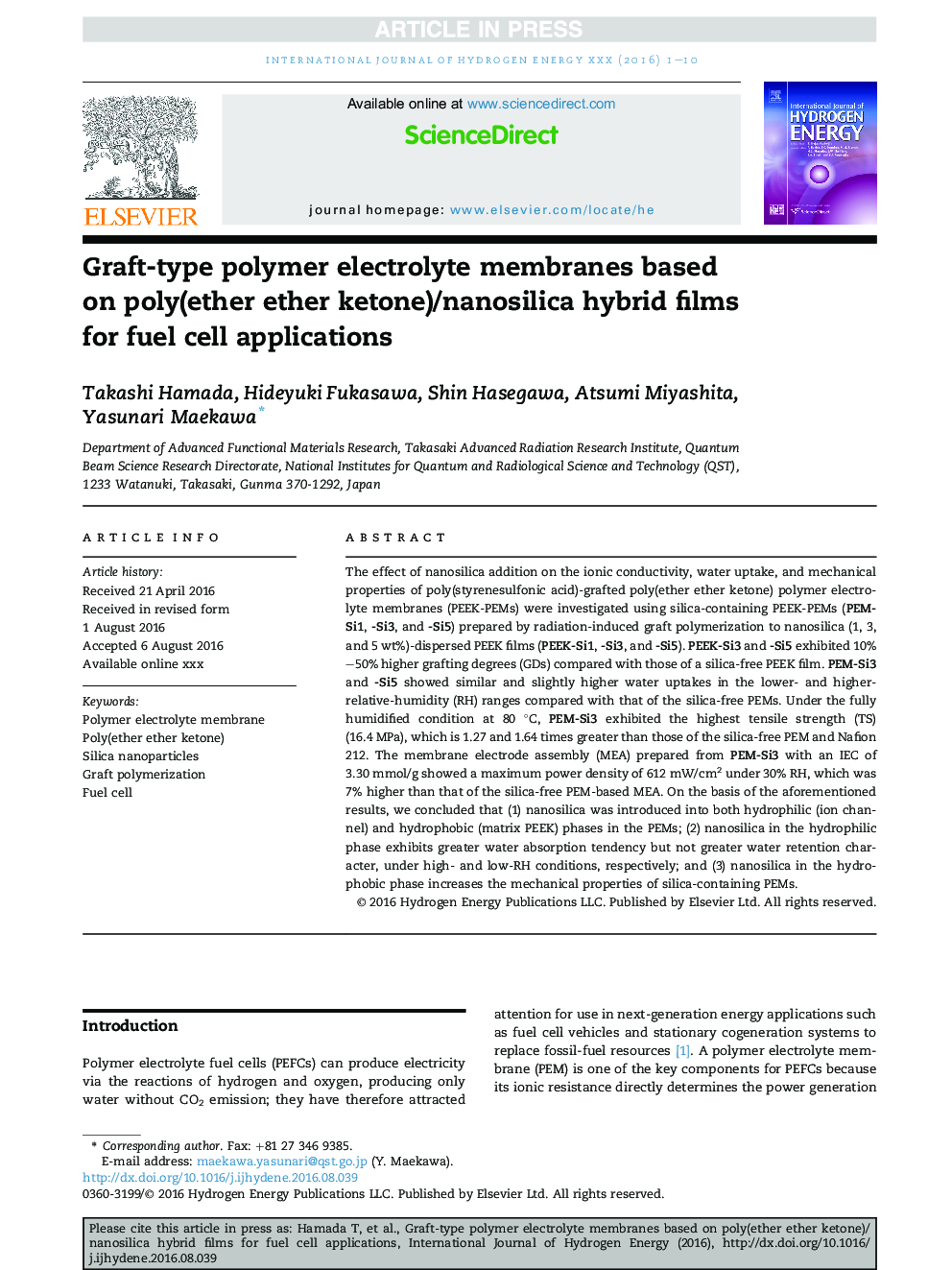| Article ID | Journal | Published Year | Pages | File Type |
|---|---|---|---|---|
| 5147411 | International Journal of Hydrogen Energy | 2016 | 10 Pages |
Abstract
The effect of nanosilica addition on the ionic conductivity, water uptake, and mechanical properties of poly(styrenesulfonic acid)-grafted poly(ether ether ketone) polymer electrolyte membranes (PEEK-PEMs) were investigated using silica-containing PEEK-PEMs (PEM-Si1, -Si3, and -Si5) prepared by radiation-induced graft polymerization to nanosilica (1, 3, and 5 wt%)-dispersed PEEK films (PEEK-Si1, -Si3, and -Si5). PEEK-Si3 and -Si5 exhibited 10%-50% higher grafting degrees (GDs) compared with those of a silica-free PEEK film. PEM-Si3 and -Si5 showed similar and slightly higher water uptakes in the lower- and higher-relative-humidity (RH) ranges compared with that of the silica-free PEMs. Under the fully humidified condition at 80 °C, PEM-Si3 exhibited the highest tensile strength (TS) (16.4 MPa), which is 1.27 and 1.64 times greater than those of the silica-free PEM and Nafion 212. The membrane electrode assembly (MEA) prepared from PEM-Si3 with an IEC of 3.30 mmol/g showed a maximum power density of 612 mW/cm2 under 30% RH, which was 7% higher than that of the silica-free PEM-based MEA. On the basis of the aforementioned results, we concluded that (1) nanosilica was introduced into both hydrophilic (ion channel) and hydrophobic (matrix PEEK) phases in the PEMs; (2) nanosilica in the hydrophilic phase exhibits greater water absorption tendency but not greater water retention character, under high- and low-RH conditions, respectively; and (3) nanosilica in the hydrophobic phase increases the mechanical properties of silica-containing PEMs.
Keywords
Related Topics
Physical Sciences and Engineering
Chemistry
Electrochemistry
Authors
Takashi Hamada, Hideyuki Fukasawa, Shin Hasegawa, Atsumi Miyashita, Yasunari Maekawa,
